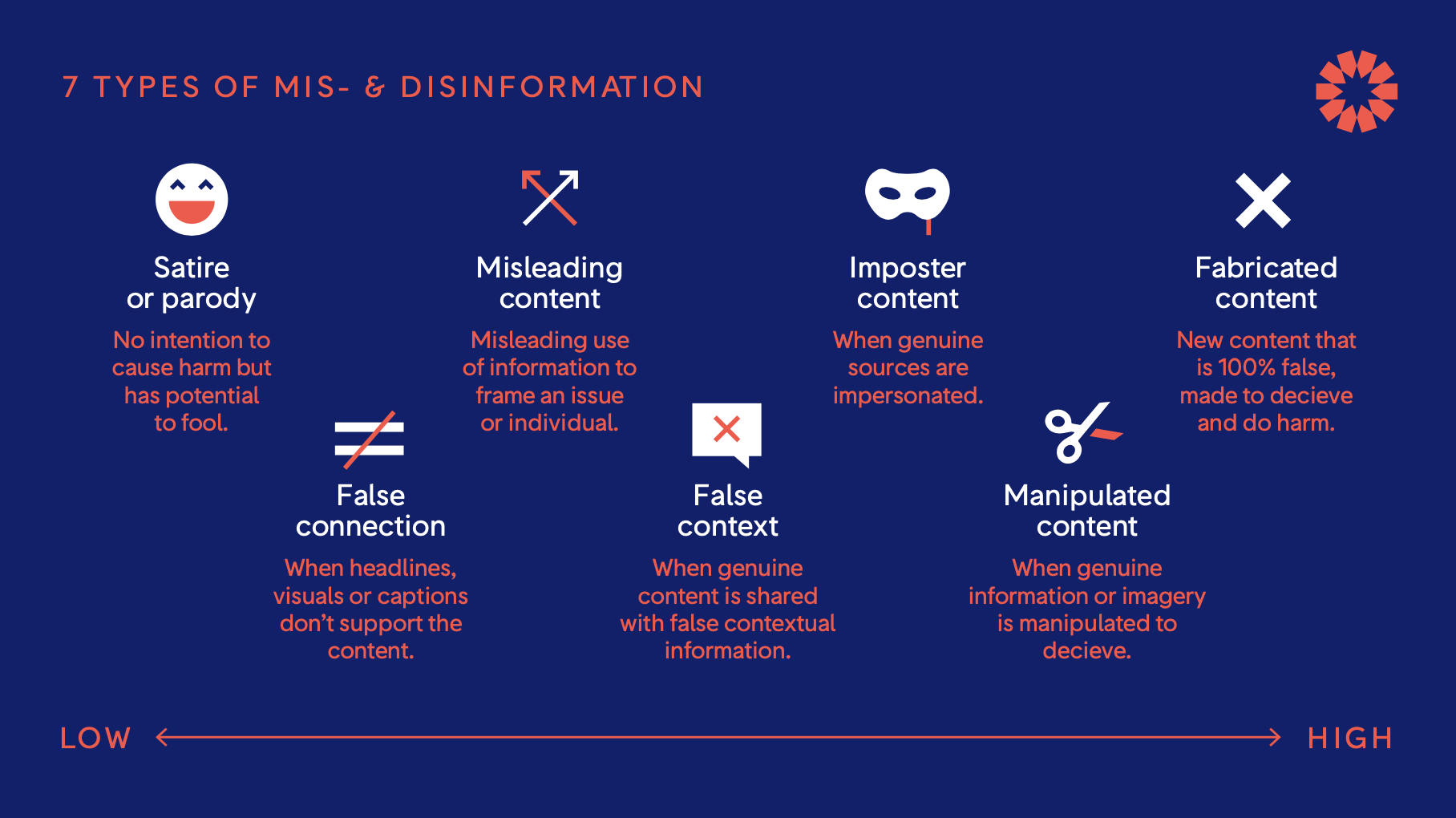Definitions adapted from First Draft News, a not-for-profit organization dedicated to countering harmful misinformation.
Disinformation is content that is intentionally false and designed to cause harm. It is motivated by three factors: to make money; to have political influence, either foreign or domestic; or to cause trouble for the sake of it.
When disinformation is shared it often turns into misinformation. Misinformation also describes false content, but the person sharing doesn’t realize that it is false or misleading. Often a piece of disinformation is picked up by someone who doesn’t realize it’s false and that person shares it with their networks, believing that they are helping.
Genuine (that is, not false) information that is shared with an intent to cause harm is known as Malinformation.
Source: "Understanding Information Disorder," First Draft News (2020)

Information Disorder is a term coined by First Draft (2015-2022). It is a broad term that encompasses all of the terms for the misinformation we contend with, such as propaganda, lies, conspiracies, rumors, hoaxes, hyperpartisan content, falsehoods, and manipulated media.

